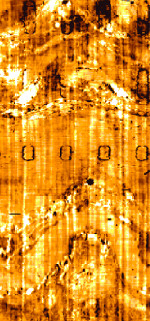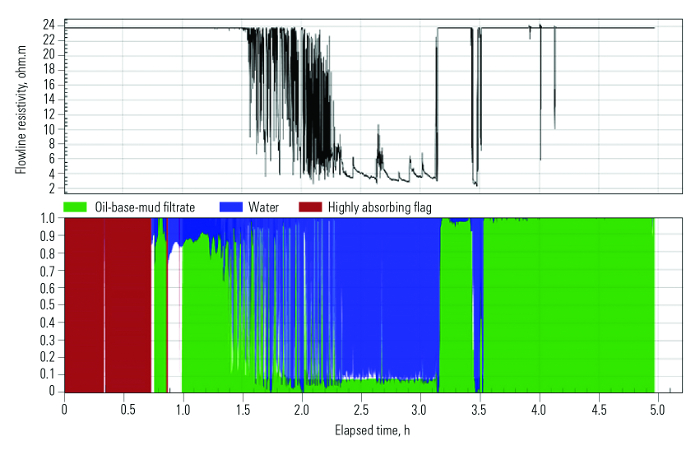Among the host of challenges confronting operators in the high-stakes deepwater environment is the need to obtain representative reservoir pressure and fluid samples efficiently and safely. Pressure measurements and fluid sampling, together with downhole fluid analysis (DFA), can be of use to confirm the presence of hydrocarbons in exploratory wells and also provide a wealth of data on formation properties such as composition, density and viscosity, along with mobility, that are essential in the design of surface facilities and completions for well production. Without this critical information, companies lack the certainty they need to ensure successful field development plans in an arena where uncertainty can drive up time, cost and risk.
Accurate DFA and pressure samples are especially difficult to obtain in tight, low-permeability and unconsolidated formations, conditions often present in some of the most prolific and important deepwater plays. In the presalt fields of Brazil, for example, operators often face formation-related challenges such as tight formations and reservoirs characterized by heterogeneity, with varying sections of high and low permeability.
In these challenging plays, conventional probe methodologies are inherently inefficient and can be time-consuming. Dual straddle packers, while they provide a much larger area open to flow compared with conventional probes, take a significant amount of time to inflate and deflate compared with probe-type tools, increasing the risk of getting stuck. Drillstem testing in deepwater wells requires days of equipment mobilization and multiple runs to obtain sampling. In an environment where rig costs alone are in the order of $1 million or more per day, such lengthy operations raise costs and can negatively affect project efficiencies.
As operators increasingly venture into complex heterogeneous fields, the ability to conduct efficient, safe and accurate formation testing is necessary to reduce uncertainty in reservoir evaluation and ultimately impacts future development costs. A unique 3-D radial probe overcomes the limitations of conventional downhole fluid and pressure sampling methodologies in difficult deepwater fields where testing has previously been too costly or not possible. Designed with four self-sealing elliptical probes equally spaced at 90-degree intervals around the circumference of the tool, the device is deployable across a wide range of hole sizes, temperatures, pressures and mobilities on various conveyance methods, including wireline and openhole tractors (Figure 1).

FIGURE 1. Impressions of the Saturn probe's inlet ports on images logged by the UBI ultrasonic borehole imager demonstrate the probe's circumferential coverage. (Source: Schlumberger)
The capabilities of the Saturn 3D radial probe were recently expanded to include large boreholes drilled with 12¼-in. bits, which are used commonly in deepwater wells. The probe can sample and take pressure tests quickly with minimal drawdown on the reservoir over a total surface flow area of nearly 80 sq. in., expanding the operational envelope of formation testing more than 40 times over the largest conventional probe.
Maintaining circumferential flow
The 3-D radial probe, the latest addition to the MDT modular formation dynamics tester system, acquires pressure measurements and formation fluids from zones previously considered to be untestable. The fluid extraction module, run as part of the openhole logging suite, serves as a conduit to connect the MDT tool to the reservoir to enable downhole DFA sampling, pressure measurements and accurate permeability estimates. The probe’s fast-setting and retracting times and zero sump design for minimizing wellbore fluid volume facilitate efficiency across a wide permeability range in a single trip. The probe quickly removes the filtrate from the circumference of the wellbore to draw in uncontaminated formation fluid.
The four self-sealing suction ports allow the probe to establish and maintain true 3-D circumferential flow. Each of the four ports has a surface flow area of 19.86 sq in. (or total area of 79.44 sq in.) and can operate where mobilities are as low as 0.01 mD/cp. Conventional probes typically cover a maximum flow area of 2 sq. in. and are limited to pressure testing formations with mobilities no lower than about 1 mD/cp. The considerably larger flow area can induce and sustain flow in low-mobility formations, formations where the matrix is uncemented and cases of highly viscous heavy oil. The large flow area also increases chances of hitting the sweet spot.
Pressure drawdown is significantly reduced across the four elliptical suction ports, reducing the matrix stress while flowing fluid. The reduction in drawdown facilitates sampling heavy oil and representative near-saturated fluids. Flowing the fluid circumferentially instead of through a single port also reduces the time for sampling clean-up and provides benefits for interval pressure transient testing. The radial probe is rated for temperatures as high as 204.4 C (400 F) and pressures up to 30,000 psi.
The rubber technology used in the probe assembly provides additional flexibility for sealing in rugose or unstable hole conditions, extremely low-permeability formations and heavy oil. The probe assembly supports the formation to enable sampling in unconsolidated formations without the risk of plugging or formation collapse.
Acquiring valuable samples in Brazil
A major operator in Brazil successfully deployed the large-hole version of the 3-D radial probe to determine the oil/water contact in a 12¼-in. deepwater well in a presalt carbonate formation. In this case, the operator needed to accurately define in real time the oil/water contact over a low-permeability zone by obtaining representative low-contamination samples over this zone.
The formation’s anticipated low mobility had raised concerns that conventional methods would not be able to deliver accurate pressure measurements and fluid samples in the water zone. In addition, the long pump times required with conventional technology to obtain representative measurements and extract fluid with low contamination would increase operational risk and rig time. In fact, a conventional probe had previously failed to determine the pressure gradient in the transition and water zones, returning only tight tests.
That failure prompted the operator to seek a solution that would function reliably in the low-permeability zone. After estimating very low mobility values of 0.03 mD/cp to 0.06 mD/cp at the test stations, the 3-D radial probe was deployed with the MDT. The probe sealed in the borehole to facilitate the acquisition of multiple pressure measurements and low-contamination water samples at two stations in 3½ and 6½ hours, respectively (Figure 2). Conventional sampling would have taken 12 to 20 hours per station. The probe quickly established contact with reservoir fluids, and real-time DFA confirmed the purity. The acquired real-time pressure and fluid data efficiently met the test objectives while reducing operational time and risk.

FIGURE 2. Downhole resistivity and optical monitoring of the fluid extracted by the Saturn 3D radial probe at a station with 0.06-mD/cp mobility confirmed quick cleanup to low levels of contamination in 3.5 hours. (Source: Schlumberger)
As production companies continue to move into uncharted plays and, in particular, deepwater environments, they rely on advanced tools and technologies that enable them to precisely understand the extent of their reserves, reducing uncertainties in an efficient manner. Offshore operators require solutions that help them produce complex fields with greater certainty by acquiring critical pressure measurements, formation property information and fluid samples. The 3-D radial probe expands the operational envelope in deepwater fields by providing quick and safe access to essential data over a significantly broader flow area while reducing rig time and risk.
Recommended Reading
Utica Oil’s Infinity IPO Values its Play at $48,000 per Boe/d
2025-01-30 - Private-equity-backed Infinity Natural Resources’ IPO pricing on Jan. 30 gives a first look into market valuation for Ohio’s new tight-oil Utica play. Public trading is to begin the morning of Jan. 31.
Venture Global Targets $110B in Massive IPO
2025-01-13 - Venture Global is expected to pitch its IPO to investors by Jan. 17 to rival the largest energy IPOs on record.
Artificial Lift Firm Flowco’s Stock Surges 23% in First-Day Trading
2025-01-22 - Shares for artificial lift specialist Flowco Holdings spiked 23% in their first day of trading. Flowco CEO Joe Bob Edwards told Hart Energy that the durability of artificial lift and production optimization stands out in the OFS space.
Exxon Slips After Flagging Weak 4Q Earnings on Refining Squeeze
2025-01-08 - Exxon Mobil shares fell nearly 2% in early trading on Jan. 8 after the top U.S. oil producer warned of a decline in refining profits in the fourth quarter and weak returns across its operations.
Chevron Targets Up to $8B in Free Cash Flow Growth Next Year, CEO Says
2025-01-08 - The No. 2 U.S. oil producer expects results to benefit from the start of new or expanded oil production projects in Kazakhstan, U.S. shale and the offshore U.S. Gulf of Mexico.
Comments
Add new comment
This conversation is moderated according to Hart Energy community rules. Please read the rules before joining the discussion. If you’re experiencing any technical problems, please contact our customer care team.



